
| Keep River National Park |
|
|
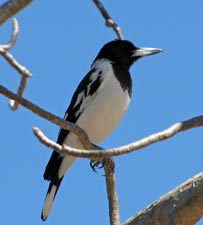 Pied butcherbird - songster of the bush |
|
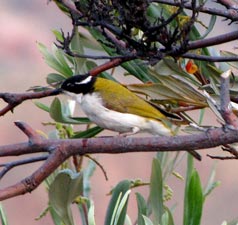 Honeyeater |
|
 |
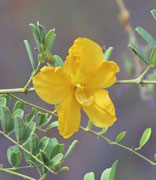 |
||
|
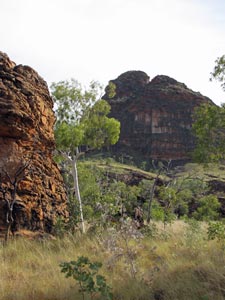 Start of the Gurrandalng Track |
|
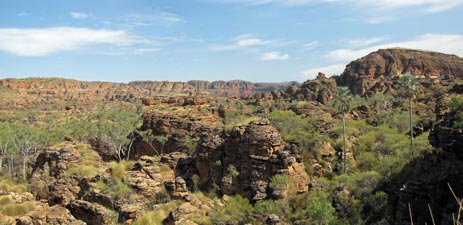 The sandstone ridges of Keep River National Park |
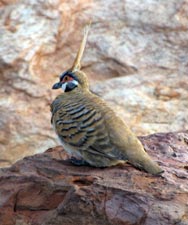 Spinifex pigeon |
|
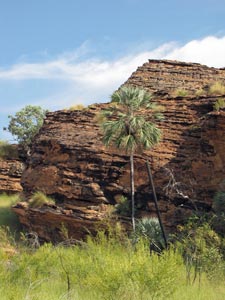 Livistona palms growing at the base of the rocky outcrops |
|
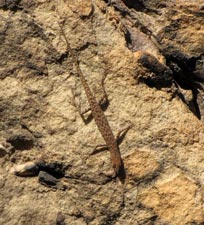 |
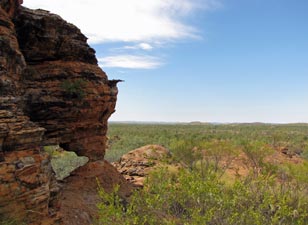 The plain beyond |
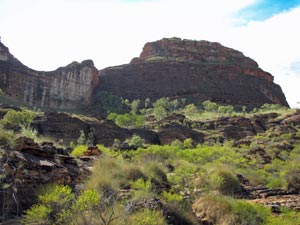 Looking up the walls of the sandstone escarpment |
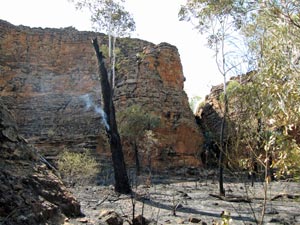 Tree still smouldering from last night's fire |
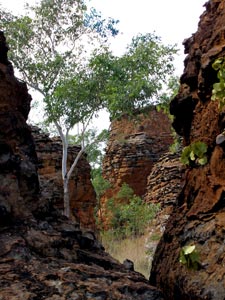 White trunked gum amongst the sandstone |
|
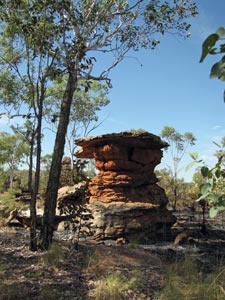 A curious sandstone pillar |
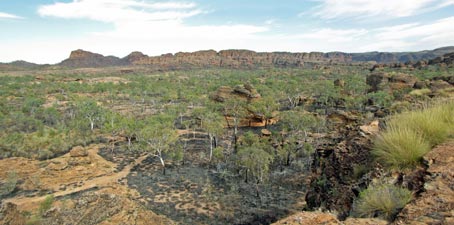 Burnt area of savannah woodland |
|
Ahead a faint plume of white smoke was drifting above the red cliffs - as we stopped to take stock, a voice from behind called out. It was our overworked duty ranger back again to check out the fire; embers had blown into the gorge starting a fresh outbreak and he was now officially closing the track. Sadly, we returned to our bushcamper - our efforts to visit the aboriginal art site thwarted by fire. The Park was slowly closing down again. 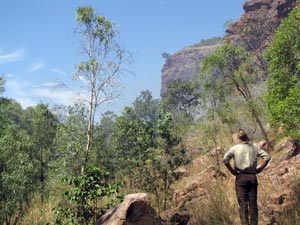 Ranger checking out the spot fire ahead |
|
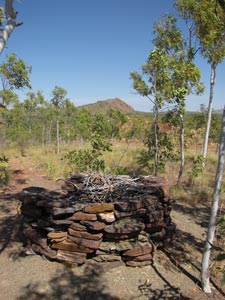 Stone hawk trap once used by aboriginal people |
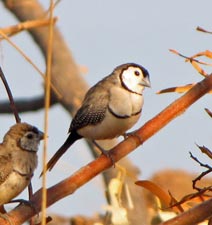 |
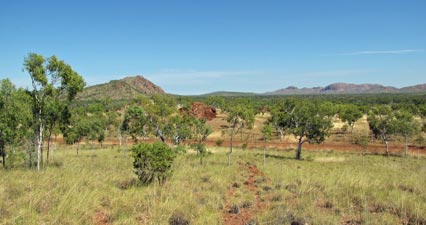 Keep River country - viewed from Ginger's Hill |
|
||
|
||